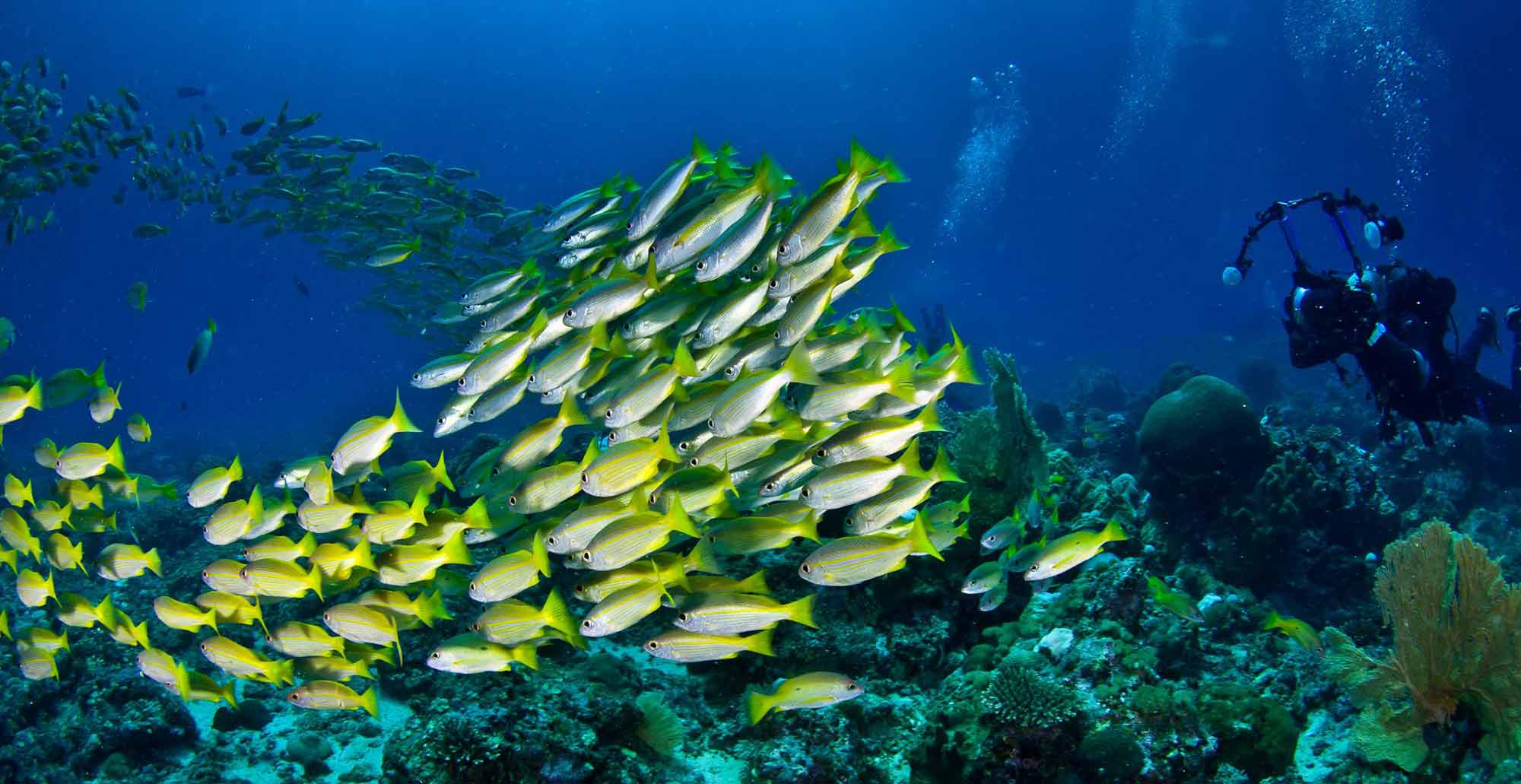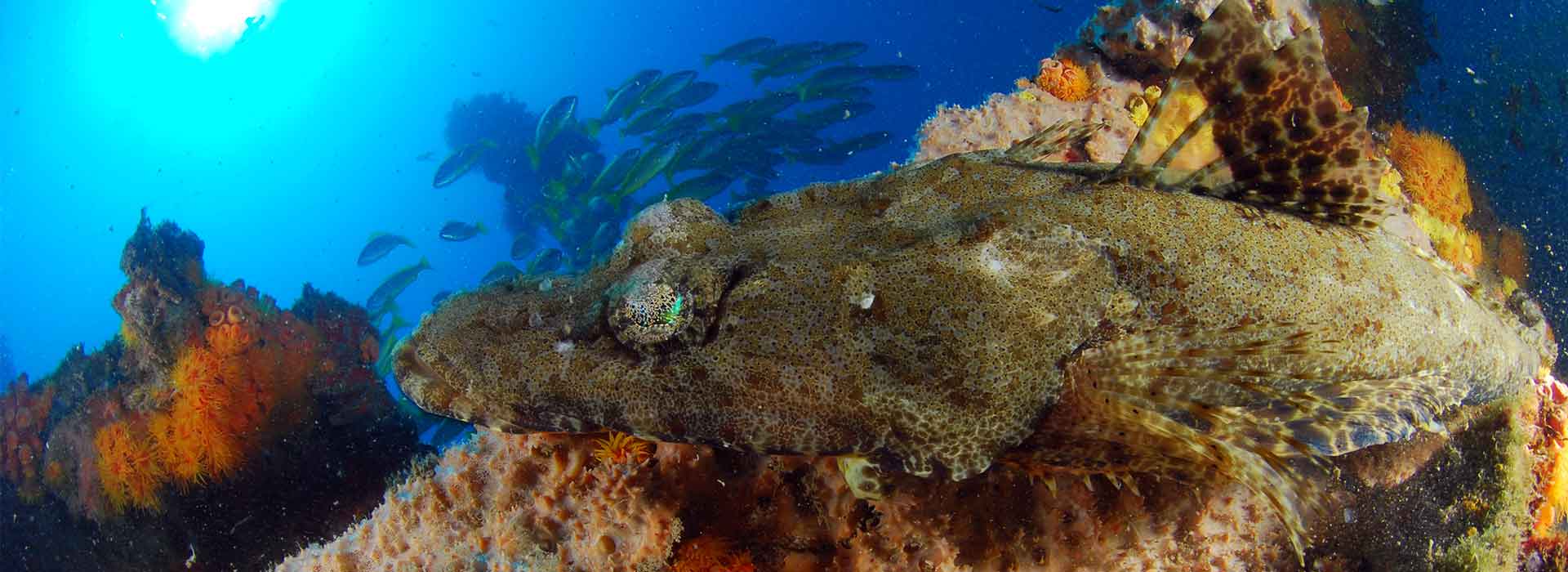
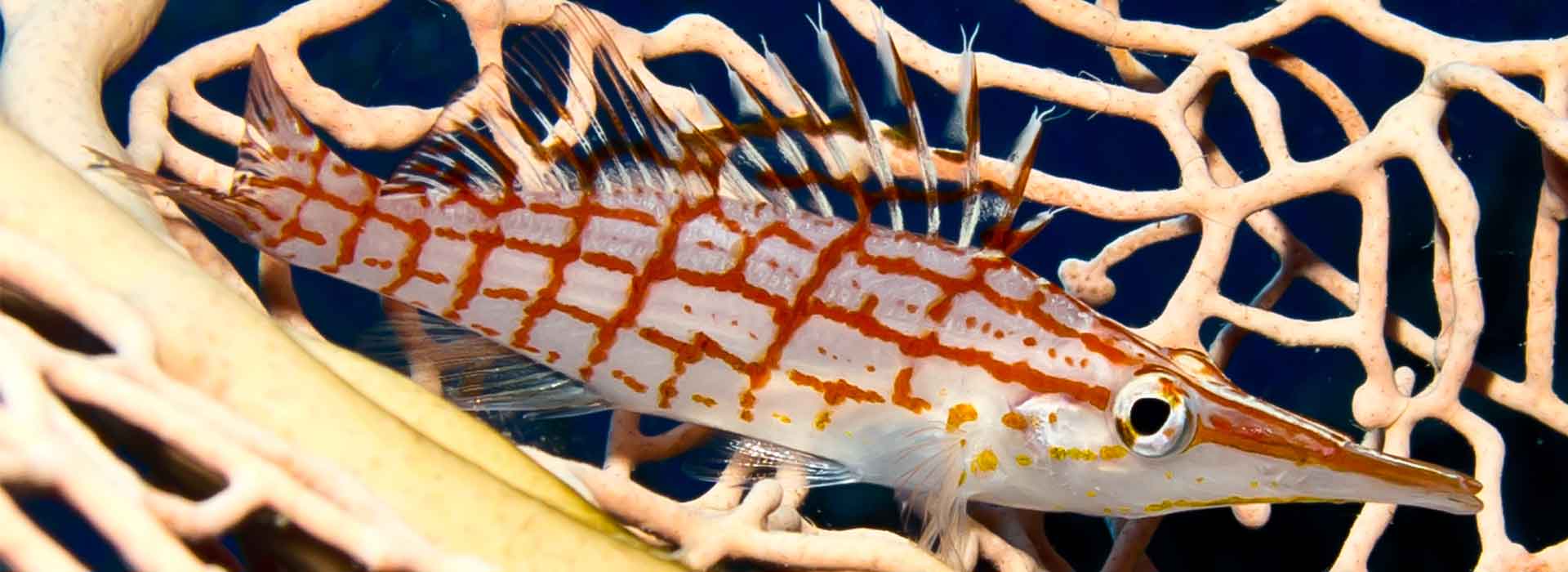
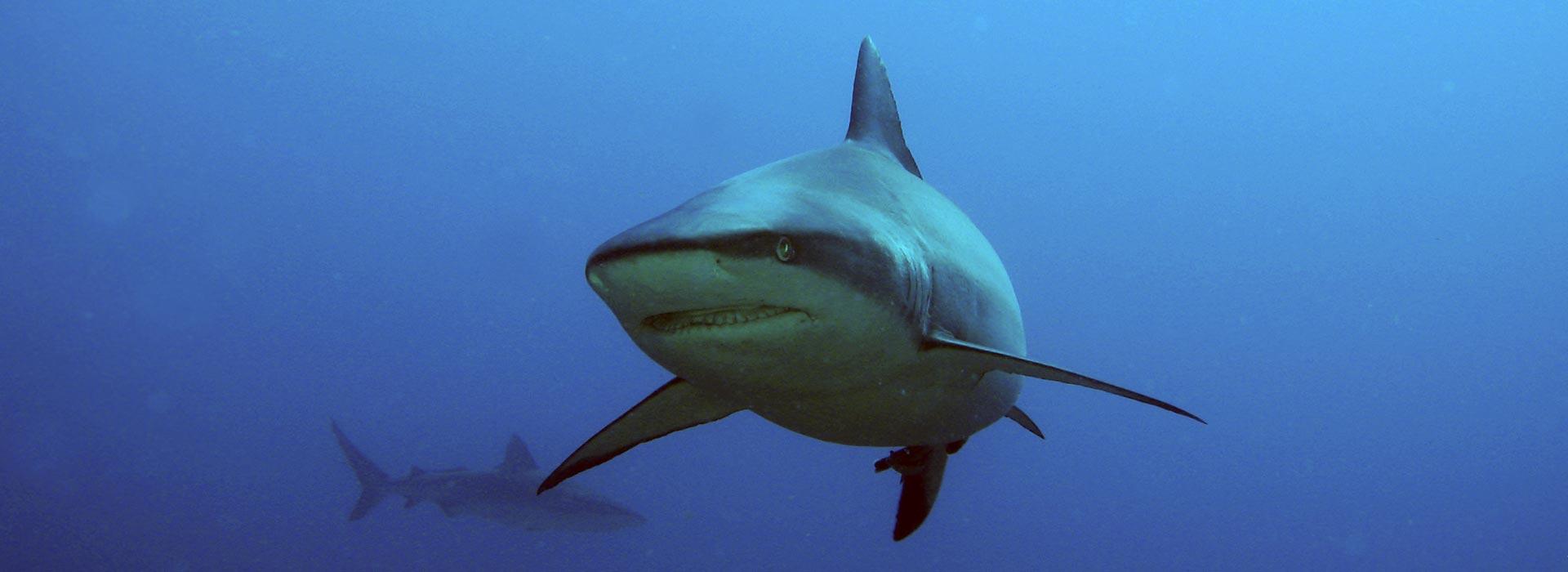
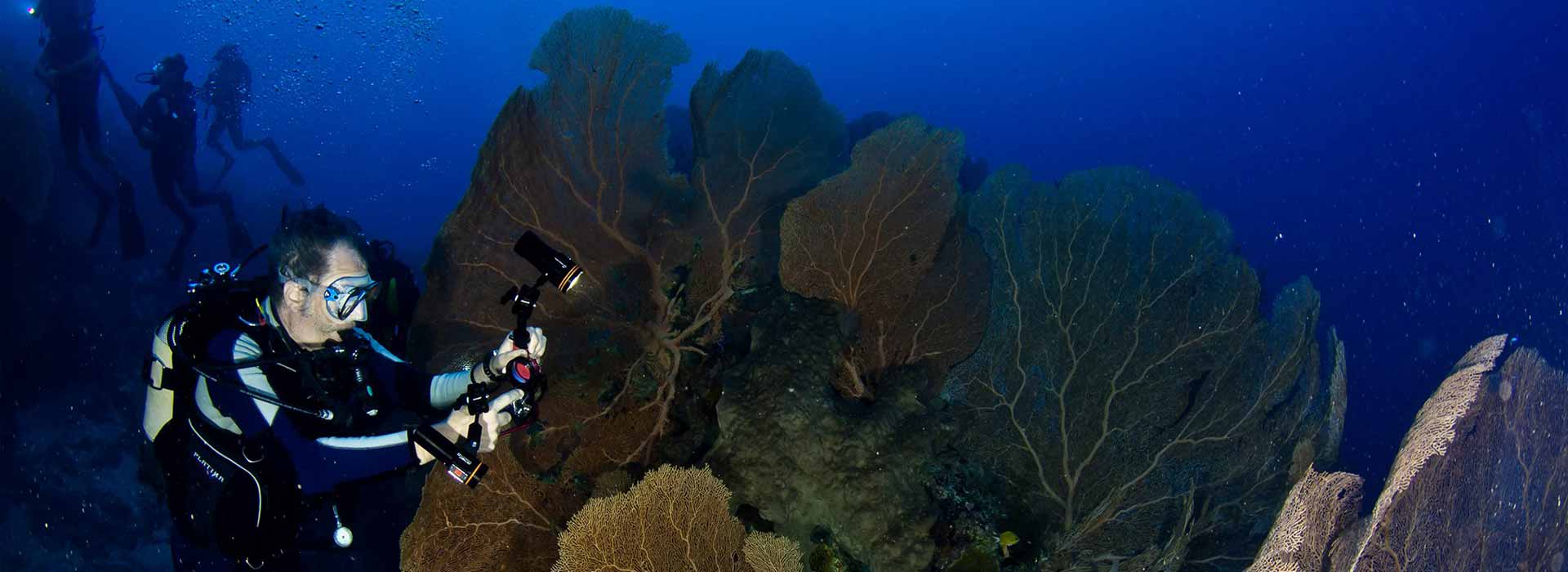




Diving in Nosy Be is the perfect example of underwater life you can find; we can absolutely say that, since we all have visited different seas around the world, we have been impressed by the amount of life we have seen in this place.
Madagascar is home to the third largest coral reef in the world.
Nosy Be offers many extraordinary dive sites, diving walls, coral plateaus, wrecks, as so on. We can name each characteristic of all the diving spots of the area, what you can see, the variety of pelagic and micro species living there, but just watching it through your own eyes can really show you what it means.
Over the years at Manta Diving we have been able to record over a hundred dive sites on the Great Continental Platform of Madagascar, including coast dives, offshore wrecks, muck dives, night dives, marine parks, Mozambique Channel and Great Chestor Bench.
Depart is usually at 8:00 a.m. directly from the beach of your hotel. Manta’s boats will welcome you with your precious equipment already on board and ready to be use for the two morning dives.
We will reach the dive site choose in the morning based on the experience of the divers, tide tables, passages, weather conditions and other little secrets of the trade.
After the first dive, at least one hour of surface interval awaits us.
This time will be use to argue about the adventure we have just had (your impressions are a treasure for us), deal with marine biology topics to raise awareness among our guests or go in search of sea creatures that the sea offers us on the way to the second dive.
We often prefer to wait a few more minutes before diving again as several dives in Nosy Be are square and some computers, especially the most modern ones, are quite conservative.
Manta Diving’s boats are all equipped with awning that will surely come in handy in the hottest months of the year, so you can choose whether to take a little ‘suntan or shelter in the shade.
A small fruit buffet, typical local coconut-flavoured sweets, fresh water and spicy tea are always at your disposal.
On the larger boat, in addition to the awning, you can use a shower to remove salt from your face or rinse your equipment with fresh water.
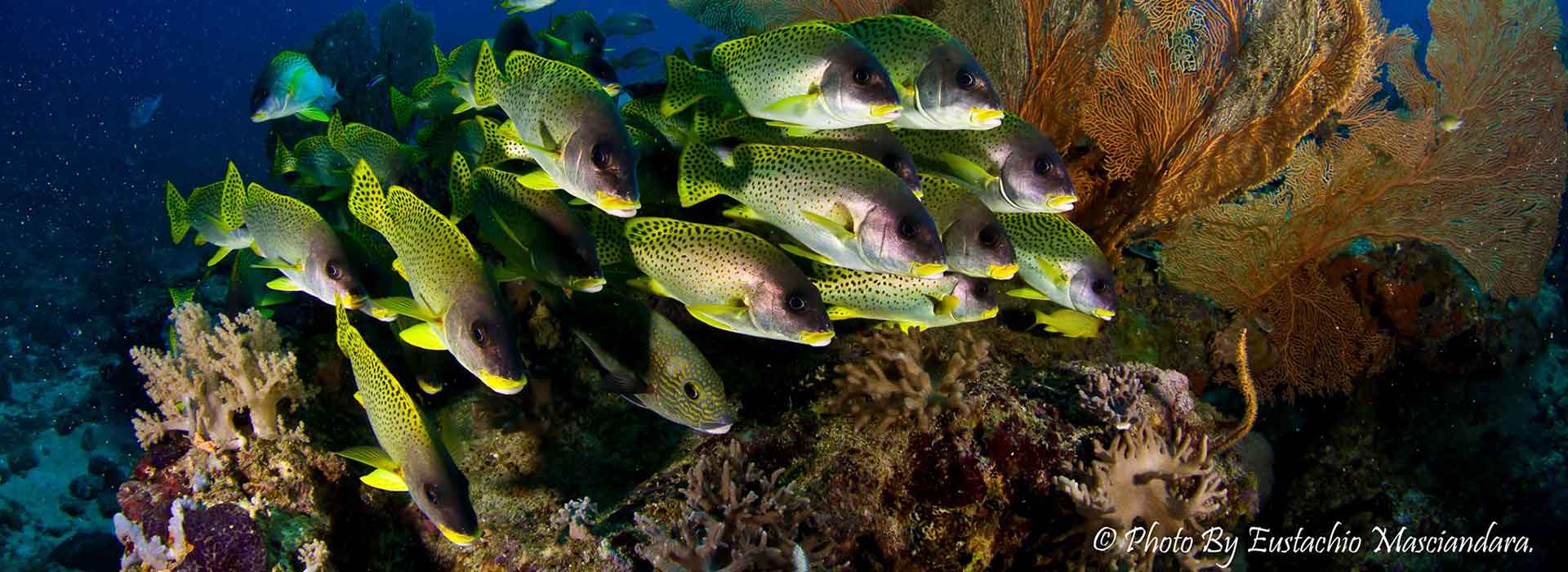
After the second dive, the return will be around 1:00 p.m. / 1:30 p.m. … except for particular sightings of large migratory fish, cetaceans and filters.
This timetable will allow you to have the afternoon at your disposal to visit the island of Nosy Be or just to enjoy a well-deserved rest.
For reasons related to safety at sea, we prefer to always return before the sun goes down to avoid navigational problems where the reef is often overhanging.
For night dives the departure is linked to the time of sunset; it will be possible to take you in front of your hotel if the tide and the light allow it, otherwise a shuttle will take you to Manta Diving where the bay in which it is located enjoys a large pass with a rock-free seabed.
Dives in Nosy Be offers a myriad of fun for every type of diver, from novices who need shallow water, to the more experienced diver who loves the most adrenaline-filled dives, to photographers embarrassed in their choice of lens or video operators who love to take photos or film strange creatures and suggestive environments.
We are sure that even the most pretentious diver will leave this island with a smile on the face, sparkling eyes and one less piece of heart.
We are in “Madagascar”, land of a thousand surprises and magic!
Usually the first two dives, which we consider it like check dive, take place at the Marine Park of Nosy Tanikely. Here we find the summary of everything you can see, meet and photograph in the open sea; this area is also ideal for those who are a bit rusty and want to resume diving after a few years of stop.
According to the necessity of the case, these first two dives will however be carried out in an area where we can be sheltered from any currents and ensure a gradual descent.
Speaking of weight: the water at these latitudes does not enjoy a great salinity, thanks to this we will avoid to descend super ballasted avoiding useless efforts and saving air for a longer dive.
Usually, a medium experienced diver can descend initially with about 4kg and in most cases, during the blue week, one kilogram can still be taken off.
The other dives at Nosy Be, take place in the open sea, maintaining safety standards both on board and in the water at high levels.
To avoid defacing the reef and to ensure constant surveillance, our captains, defined by some guests as “our guardian angels”, will not anchor except in a specific area of the Nosy Tankely Marine Park, but will instead constantly follow our bubbles for prompt assistance during the dives and at the end of them.
Entering in to the water from the stern area of our four boats, two are the methods of descent, either by reference line previously lowered, or free flying in the fascinating blue of the Ocean until at a certain point here they appear: walls adorned with gorgonians, breakaway, vertical, with or without pinnacles that surround them.
Many are the plateaus that can be found and that offer intact coral gardens teeming with life.
Humps with a mixed seabed give life to endless expanses of Melithea gorgonians and areas of clear water on the horizon, make us find shallows in the middle of the sea, but once left their tops, small walls host inhabitants of all kinds and sizes.
There are two wrecks lying on a sandy seabed and especially one is wrapped in clouds of colourful fish that whizz fast through our fins and make us spectators of their spectacular performances.
Depending on the marine weather conditions we will have the opportunity to explore a tougher dive site than another and navigation times range from 20 to 60 minutes up to 1h 45′ for diving in Nosy Iranja.
Several points are also suitable for the first levels, but despite being the third largest reef in the world, the reef is not outcropping; to ensure maximum fun, we recommend to you to have the Advanced Diver with a few experience. If you are not, with us it could be a good opportunity to take advantage and move on to the next step in your diving career.
In the coastal areas we find a sedimentary seabed formed by the proximity of mangroves and small estuaries along the coast of Nosy Be.
Thanks to the great nourishment that exists in this area, we can’t say that the visibility is as good as moving further offshore.
However, there are some wonderful dive spots, some of the most beautiful such as the Mitsio wreck heading south, others for an exceptional Muck Dive.
Following the careful eye of the guide and his nose, you will be amazed by the richness of the micro life ready to trigger any photographer the frenzy of the click.
Heading out to sea we begin to have better visibility, which will depend on both the distance travelled and the tide phase as well as the lunar phases that affect the waters and the choice of diving in this corner of the Ocean.
Towards NW we find most of the dives in Nosy Be, the seabed is home to nudibranchs, leopard moray eels, benthic fish and carangidae in the hunt.
It happens to admire large stingrays and some reef sharks.
Moving further out, the walls begins. We can decide to reach the rich coral plateaus perfectly intact, and all their biodiversity letting the pelagic run in front of our incredulous eyes, on the drop-offs around 20/23 m. Most exciting, we can to go down free and fly among clouds of riflemen and unicorn fish, reach the drop-offs and go deeper exploring large pinnacles, passages in small tunnels or between giant arches formed by the Anella gorgonians.
In these areas, in the uphill tide situation you can make encounters with large Nosy predators such as grey sharks, dogtooth tuna, barracudas and with a bit of luck sailfish, while between the end of November and the beginning of December, you could even make rare encounters with Mokarran hammerhead sharks.
On the site are described some of the dives we made.
The dives in Nosy Be are influenced by lunar phases and thanks to the different movements of water deriving from high and low tides, we have the chance to explore the dive sites with different perspectives. Some can be carried out in rising tide, others in descending tide, others in both cases. During full or black moon days, we will also see the major differences between the two tides at levels included between 0m and 4.5m.
This means that a dive in case of low tide on a plateau that is generally 5 meters deep will be at about 9.5 meters.
We can understand this phenomenon by scrutinizing the water on the surface or simply looking at the beach that in some cases also withdraws 300/400 meters.
In case of waning or rising Moon, the differences are reduced considerably, showing differences of 70 cm only.
This phenomenon also influences the activity of fish that you can also control through a useful App called Fishing Points and that you can download from Google Play for both your smartphone with Android or iOS operating systems.
The presence of fish and visibility where we go diving is greatly influenced by the tides causing the respective currents, rising or falling.
They change every 6 hours and will determine the presence of a greater or lesser quantity of pelagic fish.
On the other hand, nudibranchs and all the rest of benthic life are not apparentlye conditioned by tides.
Everywhere in the world sometimes tidal changes are very fast, especially offshore and it may happen, during a dive, to be forced to go back to the point of entry because of these changes during exploration.
Here are the tidal types you can find in the Nosy Be archipelago:
Thanks to this phenomenon, (the more intense, there more fish!), we will have the opportunity to have more fun, to explore a wider area of the seabed and swim less.
